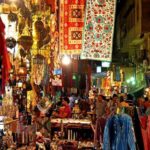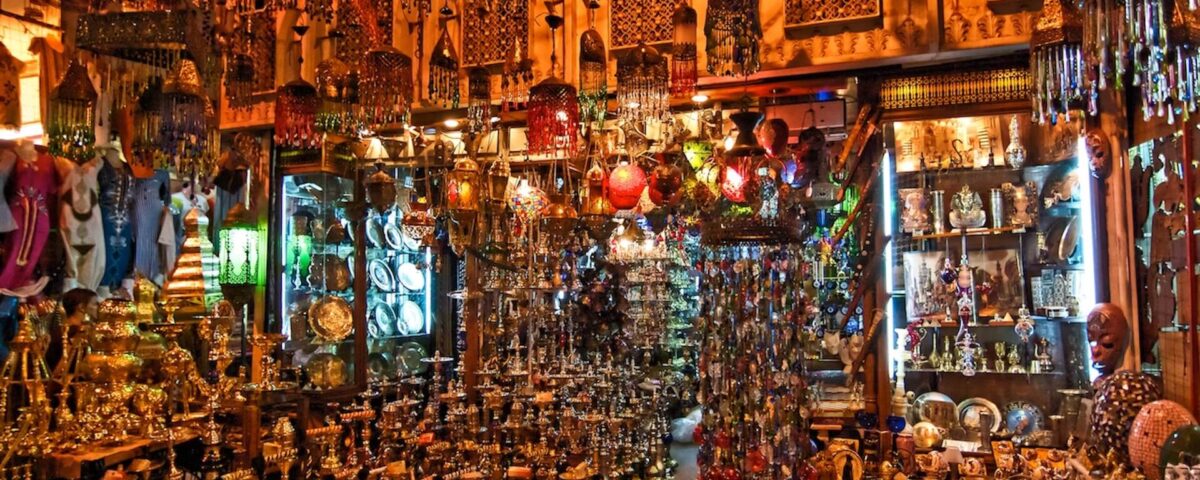
Is Khan el-Khalili Worth Visiting? Honest Traveler Reviews and Local Insights
November 5, 2025Nestled in the heart of Cairo’s historic Islamic district, the Khan El Khalili Bazaar stands as a vibrant testament to Egypt’s rich cultural heritage. This sprawling marketplace, with its labyrinthine alleys filled with colorful stalls, aromatic spices, and intricate handicrafts, draws travelers from around the globe seeking an authentic taste of Egyptian life. But timing your visit can make all the difference between a chaotic rush and a magical exploration. In this guide, we’ll delve into the ideal time to visit the Khan El Khalili Bazaar, considering factors like weather, crowds, and seasonal vibes to help you plan an unforgettable adventure.
A Brief History of Khan El Khalili: Why It Captivates Visitors
To truly appreciate the ideal time to visit the Khan El Khalili Bazaar, it’s essential to understand its storied past. Established in the late 14th century during the Mamluk era, the bazaar was named after Emir Djaharks el-Khalili, who constructed a grand caravanserai—a resting place for traders—on the site. What began as a hub for merchants traveling the Silk Road has evolved into one of Cairo’s oldest and most iconic souks, blending Ottoman, Fatimid, and modern influences.
Today, the bazaar spans over 4,000 shops, offering everything from gold jewelry and perfumes to papyrus art and traditional galabeyas. Its historic gates, arched passageways, and nearby mosques like Al-Hussein Mosque add layers of architectural splendor, making it not just a shopping destination but a living museum. The area’s UNESCO-listed status underscores its importance, attracting history buffs, shoppers, and photographers alike.
Seasonal Considerations: The Best Months for Your Trip
When pondering the ideal time to visit the Khan El Khalili Bazaar, seasonal weather in Cairo plays a pivotal role. Egypt’s capital experiences a desert climate with hot summers and mild winters, so aligning your trip with comfortable temperatures enhances the experience.
The prime window falls between October and April, when daytime highs range from 20°C to 25°C (68°F to 77°F), ideal for wandering the narrow streets without the oppressive heat. During these months, the bazaar buzzes with energy, but crowds are manageable compared to peak tourist seasons. November through February offers the coolest weather, perfect for extended shopping sessions, though evenings can dip to 10°C (50°F), so pack a light jacket.
Summer (June to September) brings scorching temperatures often exceeding 35°C (95°F), which can make navigating the crowded alleys exhausting. However, if you’re budget-conscious, this off-peak period means fewer tourists and better deals on souvenirs. Just be prepared for the heat and potential sandstorms in March or April. For those combining bazaar visits with broader Cairo sightseeing, like the Pyramids of Giza, the shoulder seasons of October-November and March-April strike a balance between pleasant weather and vibrant local festivities.
Daily Timing: Morning, Afternoon, or Evening Magic?
Beyond the calendar, the ideal time to visit the Khan El Khalili Bazaar hinges on the hour of the day. The market typically opens around 9:30 AM to 10 AM and stays lively until midnight or later, but each period offers a distinct atmosphere.
Early mornings, from opening until noon, are a hidden gem for serene exploration. Shops gradually awaken, and you’ll encounter fewer crowds, allowing for peaceful bargaining and better photos of the intricate architecture. This is especially appealing if you’re interested in visiting nearby historic sites like the mosques along Moez Street, where daylight enhances the ornate details. However, note that some vendors open later, so not everything might be available right at dawn.
Afternoons bring a surge in activity as locals and tourists flock in. From 1 PM to 5 PM, the bazaar is at its busiest, with the sun casting a warm glow over the stalls. This is prime time for people-watching and immersing in the sensory overload of spices, teas, and street food aromas. But beware of the midday heat, particularly in warmer months—stay hydrated and seek shade in cafes like the famous El Fishawy, Cairo’s oldest coffeehouse.
For a truly enchanting experience, evenings after 5 PM transform the bazaar into a fairy-tale scene. Lanterns illuminate the alleys, street performers entertain, and the air cools down, making it the ideal time to visit the Khan El Khalili Bazaar for a romantic or lively outing. The night market vibe peaks around 7 PM to 10 PM, with more locals shopping and dining, offering authentic interactions. During Ramadan, the bazaar extends hours and hosts special iftar gatherings, adding a festive layer.
Peak vs. Off-Peak: Managing Crowds and Experiences
Understanding peak and off-peak dynamics refines your choice of the ideal time to visit the Khan El Khalili Bazaar. High season (October-April) coincides with global tourism spikes, leading to throngs of visitors, especially on weekends. Fridays and Saturdays see heightened local footfall, blending with tourists for a dynamic but potentially overwhelming atmosphere.
Off-peak visits in summer or weekdays provide a quieter pace, ideal for in-depth haggling and discovering hidden gems like antique bookshops or spice merchants. Prices may dip, and vendors are more eager to chat, sharing stories that enrich your trip. However, some sections might close earlier in low season, so plan accordingly.
Events like Eid can amplify crowds, turning the bazaar into a celebratory hub—great for cultural immersion but challenging for navigation. Regardless of timing, the bazaar’s allure lies in its unpredictability; embrace the chaos for the most rewarding experience.
Essential Tips for a Memorable Visit
To maximize your time at the bazaar, heed these practical tips. Dress modestly—long sleeves and pants show respect and help you blend in. Comfortable shoes are a must for the cobblestone paths. Bargaining is an art; start at half the asking price and enjoy the banter, but walk away if needed.
Stay vigilant against pickpockets in crowds; use a cross-body bag and keep valuables secure. For navigation, arrive via Uber to Al-Azhar Mosque and cross via the underpass. Sample local treats like koshary or mint tea, and don’t miss the chance to relax at a shisha cafe.
If shopping, focus on authentic items: brass lanterns, essential oils, or handmade scarves. Quality varies, so inspect goods closely. For a guided touch, consider a local tour to uncover lesser-known spots.
Nearby Attractions to Pair with Your Bazaar Adventure
Extend your visit by exploring Islamic Cairo’s treasures. The Al-Hussein Mosque, just steps away, offers spiritual serenity, while the Citadel provides panoramic views. A short walk to Bab Zuweila gate reveals medieval fortifications, enhancing the historical context of your bazaar trip.
FAQs
What is the ideal time to visit the Khan El Khalili Bazaar for fewer crowds?
Early mornings or weekdays during off-peak seasons (May-September) offer a quieter experience, though evenings year-round provide a magical, less hectic alternative.
Is the bazaar open during Ramadan?
Yes, but hours extend into the night with festive iftar events. Daytime might be slower as vendors fast, so evenings are recommended.
How hot does it get in summer at the bazaar?
Temperatures can soar above 35°C (95°F), making afternoons uncomfortable. Opt for early morning or evening visits and stay hydrated.
Can I visit the Khan El Khalili Bazaar at night safely?
Evenings are safe with tourist police presence, but stick to main alleys, travel in groups, and remain aware of surroundings.
What should I buy at Khan El Khalili?
Look for spices, jewelry, lanterns, and textiles. Bargain hard and seek authentic craftsmanship for the best value.
Final Words
The ideal time to visit the Khan El Khalili Bazaar ultimately depends on your preferences—whether you crave the cool serenity of winter mornings or the lively glow of summer evenings. This timeless souk encapsulates Cairo’s soul, where history, commerce, and culture intertwine. Plan wisely, immerse yourself in the experience, and you’ll leave with more than souvenirs: memories of Egypt’s enduring charm. Safe travels!


